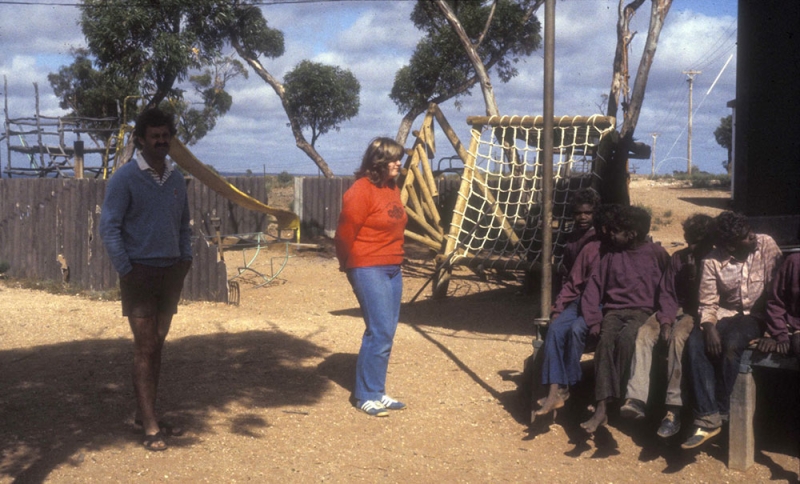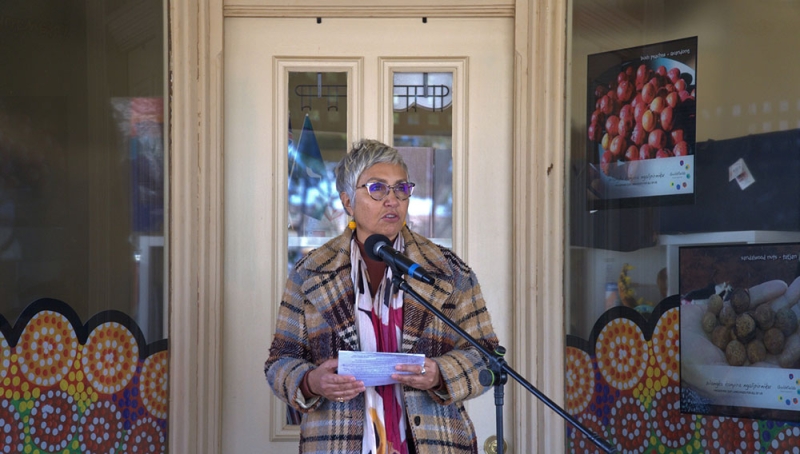A dictionary 64 years in the making
Goldfields Aboriginal Language Centre Aboriginal Corporation has published a dictionary that took 64 years to make.
Kalgoorlie, Western Australia: Goldfields Aboriginal Language Centre Aboriginal Corporation (GALCAC) is the peak body for studying and sustaining the recording, linguistic analysis and preservation of the Aboriginal languages of the Goldfields region of Western Australia. Incorporated with ORIC in early 2020, it started as a project in 2011 to work on just 2 languages—Ngalia and Tjupan. Additional funding enabled it to expand its scope to all Aboriginal languages of the Goldfields, which—depending on how you count them—is between 14 and 16.
Colonisation in this region was sudden due to the late 19th-century gold rush, and for First Nations people, devastating. Aboriginal populations were decimated by disease and starvation, competition for sparse water and food, and massacres. Most Aboriginal people who survived the first wave of European settlement were relocated to missions.

Above: Cocoa time at Cundeelee Mission, c1955. Photo by Robert McKeich, former missionary and teacher, published on NITV.
Along with the people, languages were severely dislocated, so Goldfields Aboriginal Language Centre has plenty to do. It’s governed by 8 directors including up to 3 non-member specialists with the objectives to:
- research, analyse and document all the Aboriginal languages of the region
- maintain an office, library and digital archive
- provide a forum for Aboriginal people to make decisions about their languages and cultures.
That ambitious agenda plays out in a rich array of activities for local Aboriginal people and the general public. The corporation facilitates translation and interpreter services; hosts on-Country activities, and runs training in speaking, reading and writing in language, and cultural competency. For tourists it provides what looks like a cracker of a cultural experience. It has put together a regional Aboriginal art trail. And for locals it runs an annual phone film competition—see the latest winners (and other videos)—on its YouTube channel.
What caught our attention recently was the corporation’s publication of a dictionary of Cundeelee Wangka, an Aboriginal creole language adapted from Pitjantjatjarra and other regional languages at Cundeelee mission from the 1940s to the 1980s, spoken by the Pila Arnangu or Spinifex People. In that period, Aboriginal people from various language groups were forced to move away from their traditional homelands—in some cases because their Country had been poisoned by atomic bomb testing.

Above: Susan Hanson first visited Cundeelee Mission in 1980
Cundeelee Wangka is spoken by people in Wiluna, Warburton Ranges, Ernabella, Oldea, Yalata, Coonana, Tjuntjuntjarra and Kalgoorlie. There are many fluent speakers, and many more who can speak or understand the language in some way, or who identify as of Cundeelee Wangka descent. A blend of other Western Desert languages, it’s an important language form, as Susan Hanson—senior linguist, CEO, contact person and a non-member director of the corporation—explains:
Many language groups identify with and share Cundeelee Wangka. Rather than use the English language of the colonisers, the Pila Arnangu people decided to be inclusive of all their languages and create a new language. That is a tremendous show of strength and unity in the face of adversity.
The dictionary has been a long time in development. Dawn and Brian Hadfield are a husband-and-wife team who worked with Cundeelee Wangka speakers from 1958 to the 1980s to record, analyse and document the language. Dawn had arrived in Cundeelee as a missionary, and Brian joined her a few years later. So the initial motivation for documenting Cundeelee Wangka was proselytic. But documentary projects can have unintended benefits for those whose language (or movements, cultures, identities) are documented. And this dictionary project is no exception.
Documentation enables the capture of a language at that point in time. All languages continue to evolve. The first edition of the Cundeelee Wangka dictionary holds the language as it was spoken from 1958 to the 1980s. In doing so it:
- provides current day speakers with the language form their parents and grandparents spoke before the heavy influence of English
- helps people to recover old words and terms, and talk about how the language has evolved
- empowers current day speakers, as they hold a book in their hand of their ancestor’s speech.
Sixteen years ago, after meeting Sue Hanson, their work to produce the dictionary began in earnest, and GALCAC has supported it for the last 11 years. On 3 August 2022 the dictionary was finally launched at an event in Kalgoorlie. Jody Broun, a Yindjibarndi woman who is also CEO of National Indigenous Australians Agency, spoke at the event:
It’s important work you’ve done here, in gathering this language. It’s a remarkable achievement. We know how important language is, its connection to our identity and our ongoing culture. I thank the corporation for its commitment to restoration of languages in this region.

Jody Broun, CEO of National Indigenous Australians Agency, speaking at the dictionary's launch
BHP granted GALCAC $10,000 to cover the costs of printing the dictionary, and Wilson Tucker, a member of Western Australia’s Legislative Council formally launched it. There are only 100 copies in the original edition, so if you want one, order a copy from the corporation website.

Above: Brian Hadfield, Wilson Tucker (holding the new dictionary) and Susan Hanson at the launch
The dictionary launch is an important milestone but as noted, there’s plenty more to do. Fortunately, GALCAC has resources to continue its work. Along with 26 other Aboriginal corporations around Australia, it was recently awarded funding by the Office for the Arts to continue its work to sustain Aboriginal languages. GALCAC’s share is $1.5m over 3 years.
Language revitalisation is a key to Aboriginal cultural vitality. We applaud GALCAC for all its efforts, and urge readers to spend a few minutes seeing and listening to one of its member-directors, Brian Champion, speaking in language about Country.
